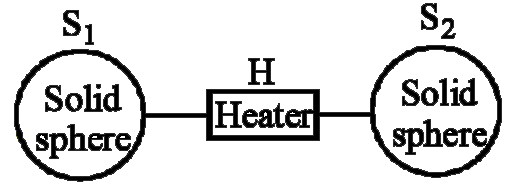
The radial propbabillity of finding an electron at spherical surface S1,S2,&S3 are in order
S1=S2=S3
S1>S2>S3
S1<S2<S3
S1<S2>S3
The correct Answer is:C
Step by step video, text & image solution for The radial propbabillity of finding an electron at spherical surface S_(1),S_(2), & S_(3) are in order by Chemistry experts to help you in doubts & scoring excellent marks in Class 11 exams.
Updated on:21/07/2023Topper's Solved these Questions
- ATOMIC STRUCTUREBOOK - BANSALCHAPTER - ATOMIC STRUCTUREEXERCISE - Exercise.2
21 Videos
- ATOMIC STRUCTUREBOOK - BANSALCHAPTER - ATOMIC STRUCTUREEXERCISE - REASONING TYPE
10 Videos
- ATOMIC STRUCTUREBOOK - BANSALCHAPTER - ATOMIC STRUCTUREEXERCISE - Exercise
12 Videos
- GENERAL ORGANIC CHEMISTRYBOOK - BANSALCHAPTER - GENERAL ORGANIC CHEMISTRYEXERCISE - Exercise 3
9 Videos
Similar Questions
The parabolas y2=4xandx2=4y divide the square region bounded by the lines x=4,y=4 and the coordinate axes. If S1,S2,S3 are the areas of these parts numbered from top to bottom, respectively, then S1:S2≡1:1 (b) S2:S3≡1:2 S1:S3≡1:1 (d) S1:(S1+S2)=1:2
View SolutionA solid sphere S1 is connected to a charge reservoir through a heater H as shown in figure.

Flux through a closed spherical surface around S1 is given by ϕ=αt2 where α is a constant and t is time in seconds. If resistance of heater is R then select correct statements
(1) Power consumed by heater will be 4α2e20Rt2.
(2) Electric flux through a closed spherical surface around S2 will be –αt2.
(3) Rate of change of electric flux through a closed spherical surface around S2 will be –2αt
(4) All of the above are correct
View Solution
Knowledge Check
The ratio of ψε passing through the surfaces S1 and S2 is-
 A1:1B−2:1C−3:1D−1:3
A1:1B−2:1C−3:1D−1:3The hydrogen -like species Li2+ is in a spherically symmetric state S1 with one node. Upon absorbing light , the ion undergoes transition to a state S2. The state S2 has one radial node and its energy is equal is to the ground state energy of the hydrogen atom.
The sate S1 isA1sB2sC2ρD3sLight is falling on the surfaces S1,S2andS3 as shown below:

The surfaces on which the angle of incidence is equal to the angle of reflection areAS1andS2BS2andS3CS1andS3DAll the three surfaces
Light is falling on the surfaces S1,S2andS3 as shown below.

The surfaces on which the angle of incidence is equal to the angle of reflection are
View SolutionThe hydrogen-like species Li2+ is in a spherically symmetric state S1 with one radial node. Upon absorbing light the ion undergoes transition to a state S2. The state S2 has one radial node and its energy is equal to the ground state energy of the hydrogen atom.
Q. The state S1 is:
View SolutionThe hydrogen -like species Li2+ is in a spherically symmetric state S1 with one node. Upon absorbing light , the ion undergoes transition to a state S2. The state S2 has one radial node and its energy is equal is to the ground state energy of the hydrogen atom.
The sate S1 is
View SolutionThe hydrogen -like species Li2+ is in a spherically symmetric state S1 with one node. Upon absorbing light , the ion undergoes transition to a state S2. The state S2 has one radial node and its energy is equal is to the ground state energy of the hydrogen atom.
The orbital angular momentum quantum number of the state S2 is
View SolutionA H-like species Be3+ is in a spherically symmetric state S1 with two radial nodes. Upon absorbing light the ion undergoes transition to a state S2. The state S2 has one radial node and its energy is equal to the ground state energy of the H-atom.
The stateS_(1) is :
View Solution
